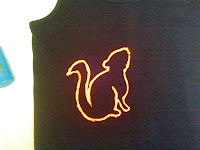A little exersize i like to do, is ill look around me and find a series of objects. Then i select areas of the object, as if you "zoom-in" on them, and draw it on the page and keep adding different shapes and textures. Eventually, you will come up with somewhere very abstract that doesn't look like the objects you started with but gives you a sort of, template, to work with!
_________
Here are two websites where it takes you through some easy steps to painting or drawing abstract art:
http://www.wikihow.com/Create-a-Random-Abstract-Drawing
http://painting.about.com/od/stepbysteppaintingdemos/ss/KarenDayVath_7.htm
http://www.art-is-fun.com/how-to-paint-abstract-art.html























































